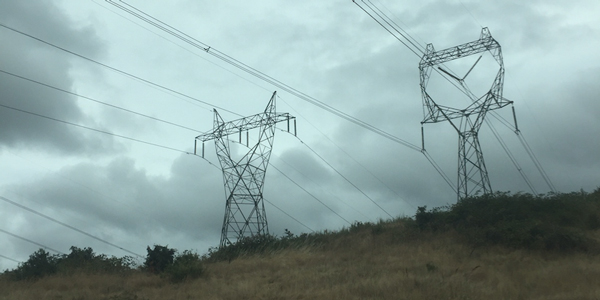RENSSELAER, N.Y. — NYISO experienced a peak load of 31,293 MW on July 2, the highest demand so far this summer but falling far short of the all-time peak of 33,956 MW, the ISO’s Management Committee heard last week.
Operations Vice President Wes Yeomans on Wednesday informed the committee about grid operations during a six-day heat wave in early July, which will be reported formally in August.
High temperatures and humidity on July 1 caused the grid to have “experienced a very high peak for a Sunday,” Yeomans said.
The ISO activated demand response on July 2 in New York City’s Zone J in response to the weather and the forced outage of a 345-kV line in the city, he said. Last summer, demand never exceeded 30,000 MW, with the peak of 29,699 MW occurring July 19, coming in 7% below the 10-year average of 31,968 MW.
The 33,956-MW record came at the end of a weeklong heat wave on July 19, 2013.
The ISO in May reported a total of 42,169 MW of resources available to meet this summer’s expected peak demand of 32,904 MW, 2.9% above the 10-year average. (See NYISO Ready to Meet Summer Demand.)
COO Rick Gonzales delivered the operations report for June, noting that high levels of wind curtailment upstate were coincident with scheduled outages of the Browns Falls-Taylorville 115-kV line and the forced outage of the Marcy-Coopers Corners 345-kV line.
MC Approves Change on Congestion Data Reporting
The committee voted in favor of changing how NYISO reports historic congestion, supporting the Business Issues Committee vote earlier in July that the current process is resource-intensive and the resulting data under-utilized.
The vote recommends that the Board of Directors endorse the new process, which will require Tariff changes. (See “BIC OKs Change on Congestion Data Reporting,” NYISO Business Issues Committee Briefs: July 11, 2018.)
No Cost of Service Study
The committee voted that a new cost of service study (CSS) should not be conducted during late 2018 and 2019 to inform a decision on whether a modification of the 72%/28% cost allocation between withdrawal billing units and injection billing units is warranted, pursuant to Tariff Section 6.1.2.3.
Chris Russell, manager of customer settlements, said that language included in Rate Schedule 1 requires a vote by the committee in Q3 2018 to determine whether a new CSS should be conducted to evaluate the allocation between withdrawals and injections.
The ISO’s current RS1 allocation provides rebates for recoveries from non-physical transactions.
MC to Help Fill Board Vacancies
Committee Chair Erin Hogan said she had been asked to form a subcommittee to help fill two upcoming vacancies on the board after Directors Thomas F. Ryan Jr. and Jane Sadowsky complete their terms.
Hogan asked that each sector representative by Aug. 1 provide two candidates to serve on the subcommittee in order to complete preliminary work next month and get a search firm to select board candidates by Thanksgiving.
— Michael Kuser




